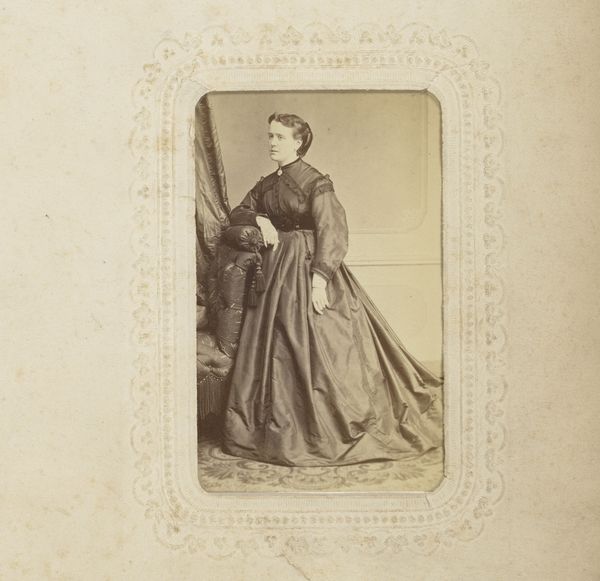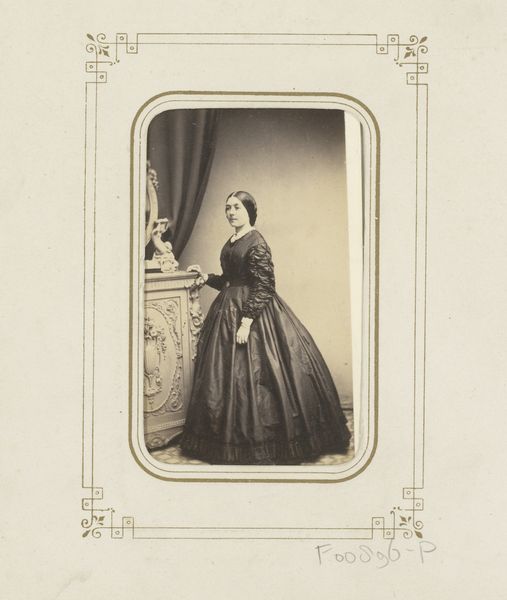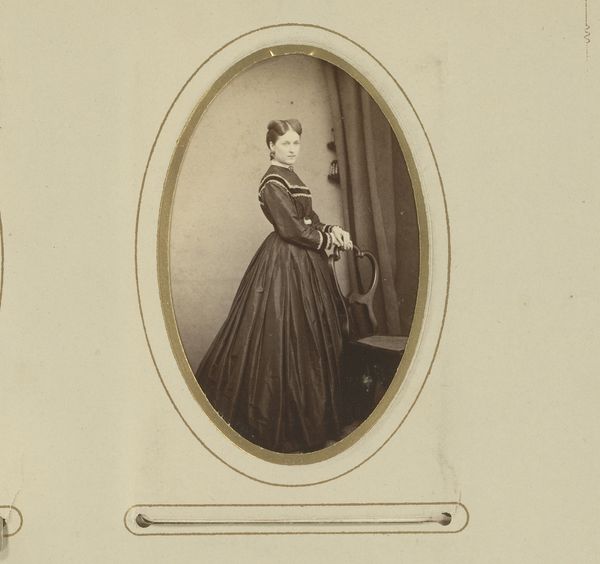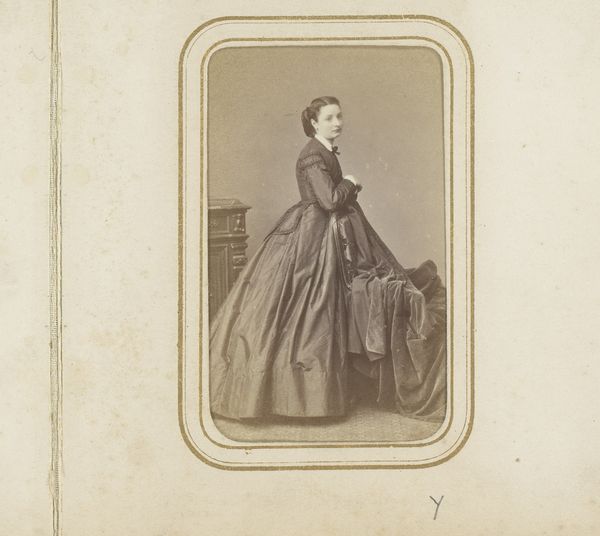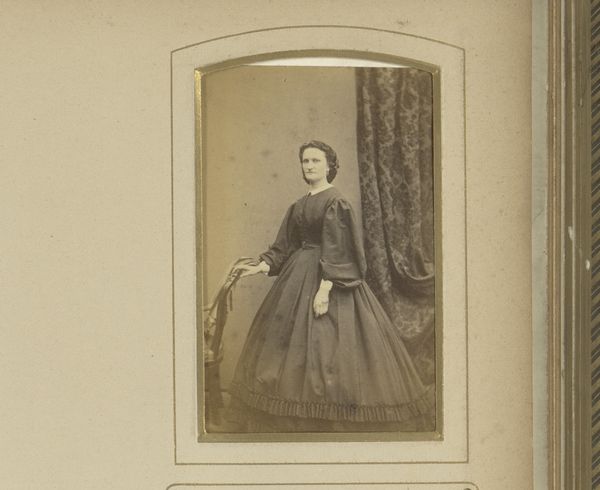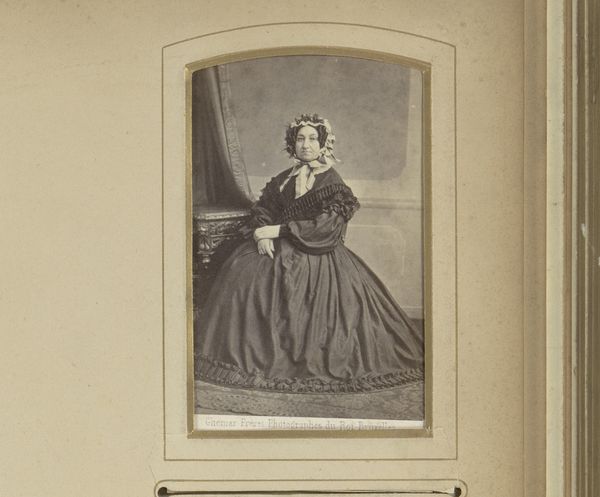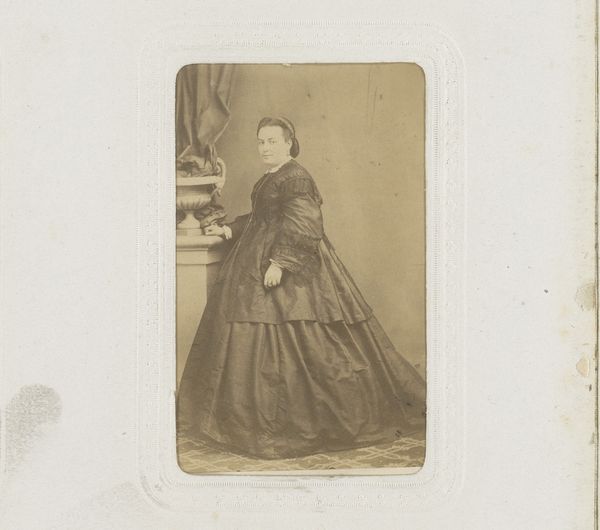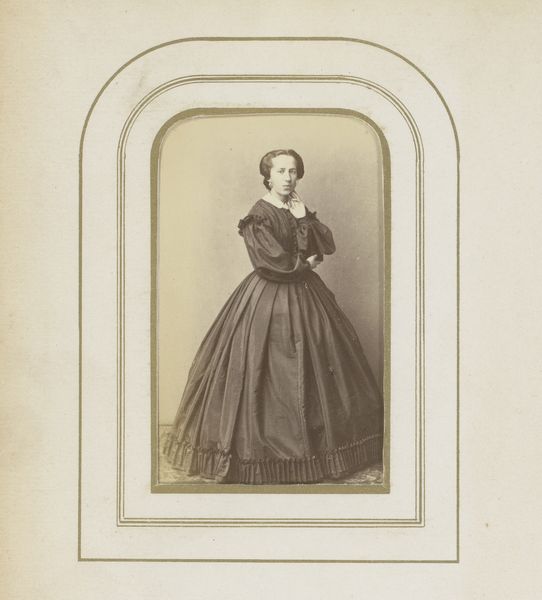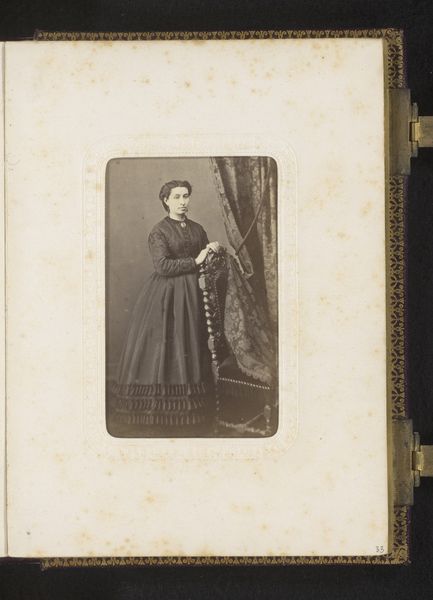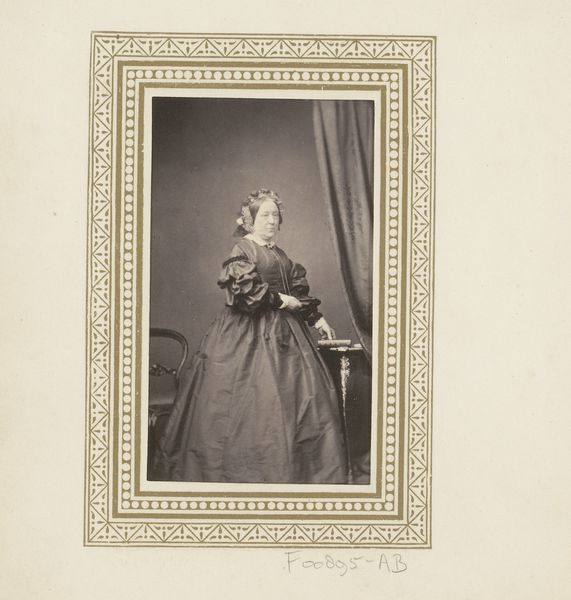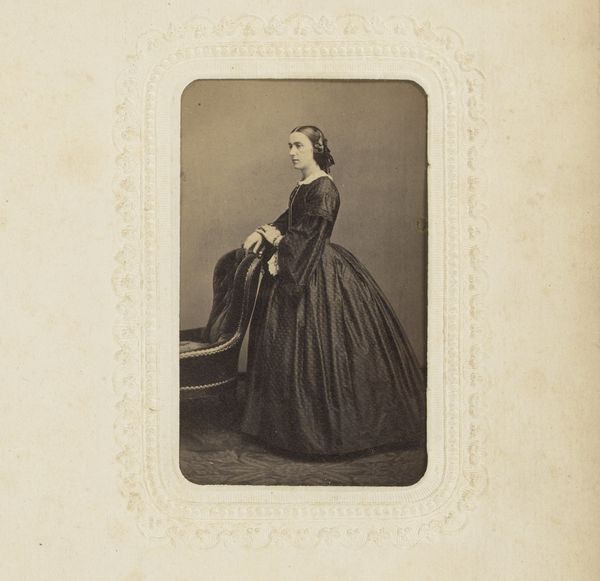
photography, photomontage, albumen-print
#
portrait
#
photography
#
historical photography
#
photomontage
#
19th century
#
genre-painting
#
albumen-print
Dimensions: height 83 mm, width 51 mm
Copyright: Rijks Museum: Open Domain
Editor: This albumen print, "Portrait of a Woman, Standing by a Chair," made sometime between 1861 and 1880 by Emile Bondonneau, has such a formal stillness to it. It almost feels staged, with the woman positioned just so next to the chair. What draws your eye when you look at this? Curator: I'm fascinated by the material process. Albumen prints, like this one, were born from a meticulous layering of materials: glass negatives, sensitized paper coated in egg whites... Consider the labor involved in producing these images – the gathering of eggs, the mixing of chemicals, the precise timing in the darkroom. This wasn’t just snapping a photo; it was crafting an object. Editor: So you're more interested in *how* it was made than what it depicts? Curator: Precisely! And think about the social implications. Photography in the 19th century was rapidly democratizing image-making, yet albumen prints, with their relative complexity, maintained a certain exclusivity. Owning one of these portraits became a statement, a display of social status tied directly to economic capital and technical skill. Editor: I hadn't thought of it that way. The actual material seems key, beyond just the final image. Curator: Absolutely. Consider how the rise of industrial photography and cheap printing later challenged that exclusivity. This piece is more than a portrait; it's a material document of changing social dynamics and the evolving landscape of visual production. Look closer – the subtle imperfections, the tonal range created by the albumen… these all point to the specific conditions of its creation and consumption. It really makes you wonder about the working conditions. Editor: That makes the photograph seem less like a passive historical record and more like a product of its time, shaped by technology and labor. I guess I've only considered the artistic aspect. Thanks for opening my eyes. Curator: The ‘artistic’ *is* inherently bound to these material realities. Looking at art through the lens of production and materiality opens up exciting new perspectives.
Comments
No comments
Be the first to comment and join the conversation on the ultimate creative platform.

